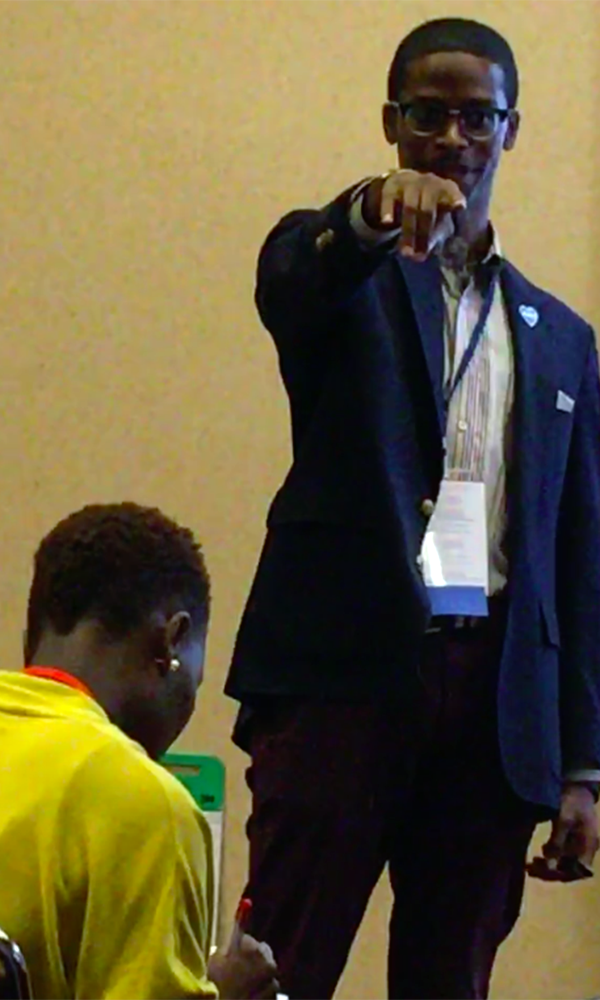
RobMarmion/Shutterstock
.
ATLANTA — Earlier this year, the Boys & Girls Clubs of Metro Atlanta changed the way it introduced new workers to the organization.
The reason? To prevent turnover of its young adult staff members.
“Millennials can determine in three months whether they want to stay in your organization,” said Julian Smart-Rimple, a training specialist for the Boys & Girls Clubs of Metro Atlanta.
He’s a millennial himself.

Stell Simonton
Julian Smart-Rimple leads orientations for part-time workers at the Boys & Girls Clubs of Metro Atlanta and provides a career-path process for them that he says is vital to retention.
“We’re very strategic. When we come into a company we want to know how quickly we can move up,” he said.
Many after-school programs already have trouble retaining staff. And Smart-Rimple thinks the problem is likely to get worse as millennials become a larger proportion of the labor force.
But there’s one secret weapon that organizations have, he said: good onboarding.
Onboarding is the process of integrating new employees into an organizations. New workers who go through a structured orientation are 69 percent more likely to still be at the organization after three years than those that did not, according to Smart-Rimple. He bases that on a 1998 survey cited by the Society for Human Resource Management (SHRM).
Onboarding helps with retention, greater job satisfaction and improved job performance, he said.
“If you just throw them out there, don’t get mad if they turn in their resignation in three months or a year,” he said.
The Boys & Girls Clubs of Metro Atlanta has 25 clubs serving more than 3,300 youth. When part-time workers for those clubs are hired, Smart-Rimple provides a detailed orientation. New hires learn everything from who the full-time staff are to the location of the first-aid kit and defibrillator.
A good introduction to an organization helps new employees feel more competent to perform in it, understand their role, integrate with other employees and adapt to an organization’s culture, according to SHRM.
Smart-Rimple also introduced a process for “career-pathing.”
In their first few months, new hires get specific information on pathways forward, including a list of requirements they can meet in order to get a raise in six months to a year. Requirements include leading a staff meeting, completing online training courses and putting together a new program for kids.
Career-pathing is very important, Smart-Rimple said, because millennial workers want to understand processes. While baby boomers are concerned about the organization they work for and its reputation, millennials’ main concerns, he said, are:
- How they can earn more money
- The possibilities for rising in the organization or getting other jobs outside it
- The practical steps they can take to advance.
“We develop them,” he said. “They’re not just a body in the room.”
Part-time staff members are also eligible for tuition reimbursement if they meet certain requirements over nine to 18 months, he said.
Smart-Rimple asks other youth-serving organizations: “What are you doing to capture our generation so we don’t leave?”





























